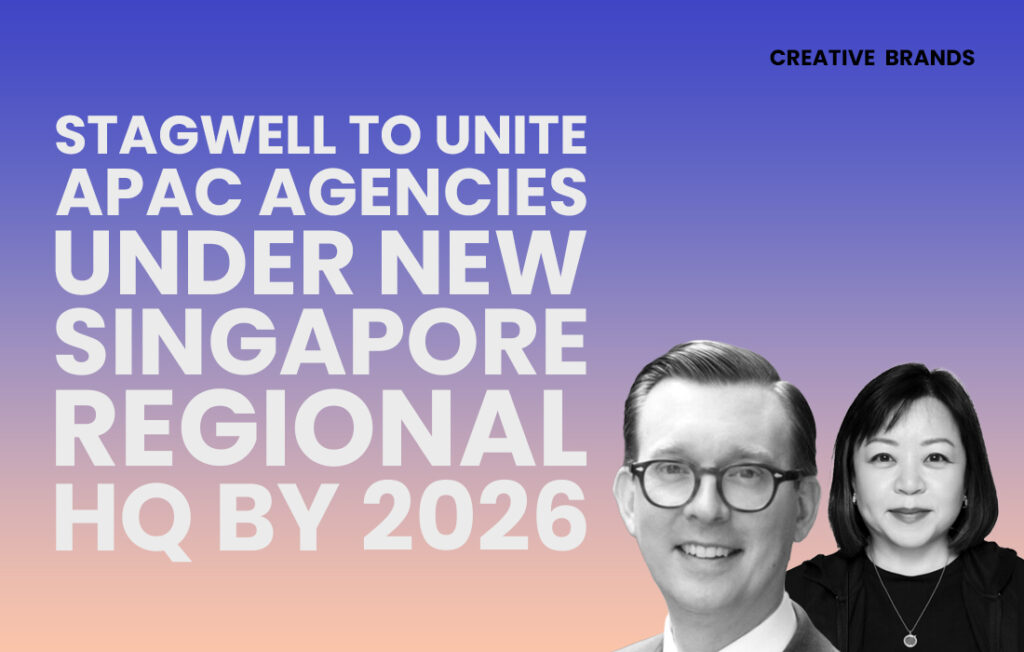Stagwell will consolidate its Singapore operations into a new regional headquarters opening in Q1 2026, bringing APAC agencies, including ADK, Allison, Assembly, Forsman & Bodenfors, HarrisX, Ink Global and Locaria under one roof. The move aims to accelerate cross-disciplinary integration across creative, media, communications, digital transformation and AI-driven marketing solutions.

Stagwell is set to significantly reshape its Asia-Pacific footprint with the announcement that it will consolidate its Singapore operations into a new regional headquarters, a move the company describes as central to accelerating cross-discipline collaboration and scaling growth across the region. Scheduled to open in the first quarter of 2026, the new HQ will bring multiple agencies from across the Stagwell network under a single roof—physically aligning creative, media, communications, digital experience and data capabilities to unlock the speed and efficiency that marketers increasingly demand.
The upcoming facility will house teams from ADK, Allison, Assembly, Forsman & Bodenfors, HarrisX, Ink Global and Locaria, in addition to other brands in the wider Stagwell ecosystem. Bringing these varied agencies together is intended to eliminate operational silos, enabling faster coordination across campaigns, more integrated strategy and streamlined access to cutting-edge marketing and data solutions. In a region where consumers move quickly, digital innovation accelerates competition and brand expectations grow higher every quarter, Stagwell is positioning its Singapore hub not just as an administrative centre, but as an engine for high-velocity marketing transformation.
Announcing the move, Stagwell stated that it expects the integration of talent and capability to strengthen its offerings in creative, media, communications, brand experience, digital transformation and AI-powered marketing. For clients, this means easier access to multidisciplinary teams and the ability to blend brand strategy, content, experience, insights and measurement in one workflow. For the network, it signals the growing importance of Asia—a region that is rapidly becoming the benchmarking ground for global marketing innovation. “This is the new model. More connected, more inventive, and built for the momentum of local markets,” said Randy Duax, managing director, Stagwell Asia-Pacific. “Asia is where the future of this industry is being built, and Stagwell is building it.”
The move is also being described internally as a cultural play—not only integrating systems and workflows, but fostering shared values, collaboration and mobility across teams that historically operated across different offices and even different countries. Stagwell APAC’s chief growth officer Connie Chan emphasised that the headquarters consolidation reflects the network’s focus on collaboration and sustainability in the region. Her remarks align with the broader industry shift toward reducing duplication across marketing supply chains and designing more agile models that allow agencies to support brands without adding unnecessary cost or complexity.
The headquarters announcement comes on the heels of a major structural change for Stagwell: the acquisition of ADK Global, completed in July 2025. The ADK integration has sparked new organisational dynamics and leadership alignments that are expected to ripple through the APAC business as the new HQ prepares to launch. As part of the process, Richard Brosgill now doubles as CEO of Assembly APAC and the combined lead for ADK–Assembly operations. Meanwhile, Yasuyuki Katagi, former CEO of ADK Global, has taken over as chief integration officer for APAC. Both appointments are being interpreted as strategic moves to ensure the combination of global media scale and Japanese creative legacy plays out in a way that supports long-term transformation.
The consolidation of the Singapore office can therefore be seen as both a symbolic and structural continuation of what began with the ADK integration—a decisive move toward reducing fragmentation and building end-to-end regional capability that can match the scale and sophistication of global holding groups while still being engineered for the nuance and speed of APAC markets. The network is betting on a foundation in Singapore, one of the world’s most advanced hubs for advertising and digital innovation, to act as an accelerator for both regional and global delivery.
For brands, the new structure signals that Stagwell wants to compete in APAC as a unified challenger rather than a federation of specialist agencies. The gamble is clear: clients want creative ideas backed by data-driven precision; media plans driven by cultural intelligence; and digital experiences amplified by technology, analytics and AI. The Singapore HQ is expected to allow teams to co-create solutions based on real-time consumer insight, remove lag between disciplines and streamline operations across markets including Japan, South Korea, Southeast Asia, China, India and Australia.
Beyond strategy and structure, however, Stagwell’s consolidation is an attempt to capture something harder to quantify—momentum. Asia-Pacific remains one of the fastest-growing advertising markets in the world, with digital-first consumption patterns that often influence global innovation pipelines. APAC has become the proving ground for brands experimenting with conversational commerce, live shopping, generative AI activation, immersive events and cultural-driven marketing. By concentrating diverse capabilities across one regional nucleus, Stagwell hopes to match the fluidity of this environment and deliver solutions before market cycles shift.
The organisational impact within Stagwell is also expected to be significant. Centralising operations could change how teams collaborate, how pitches are coordinated, how talent is deployed and how intellectual property is shared across agencies. The Singapore headquarters is likely to become a talent magnet, serving as a cross-training ground where strategists, creatives, technologists, analysts and PR professionals can work together more frequently. It may also support APAC-wide efficiencies including shared technology systems, unified training platforms, joint new-business approaches and data-driven processes for forecasting and measurement.
Still, consolidation is not without complexity. Integrating agencies with distinct cultural legacies—from the Swedish creativity of Forsman & Bodenfors to the Japanese roots of ADK, the analytics-driven DNA of HarrisX and the media-commerce competencies of Assembly—requires leadership sensitivity and operational discipline. The roles assigned to Brosgill and Katagi suggest that Stagwell is approaching the challenge with a dual-lens strategy: continuity through existing brand leadership and cohesion through a dedicated integration leader.
In the broader market context, holding groups are increasingly moving toward capability consolidation rather than traditional agency-portfolio expansion. Clients are demanding simplicity, speed and accountability. For many global networks, Asia is too large and competitive to manage through fragmented structures. Stagwell’s announcement shows that it wants to accelerate ahead of peers by establishing one of the most integrated APAC hubs in the industry.
With the new headquarters set to open in Q1 2026, the coming year will be a transition period marked by operational alignment, leadership planning, resource centralisation and likely further organisational updates. What is already clear is that Stagwell is embracing a future where boundaries between creative, media, PR, digital and data no longer define agency identity—but instead form a single, interconnected value proposition.
When the doors of the Singapore HQ open, the network will be taking not just logistical steps but strategic ones—betting that the strongest marketing solutions for the next decade will emerge from environments where disciplines interact continuously rather than sequentially. For Stagwell, the consolidation is a statement: APAC is not a satellite market, but a centre of gravity for the future of global marketing.







